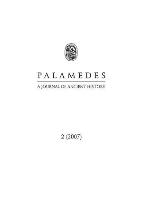THE PHYSICAL APPEARANCE OFA PURE GREEK IN LITERATURE OF THE SECOND SOPHISTIC PERIOD
THE PHYSICAL APPEARANCE OFA PURE GREEK IN LITERATURE OF THE SECOND SOPHISTIC PERIOD
Author(s): Krystyna StebnickaSubject(s): History
Published by: Wydawnictwa Uniwersytetu Warszawskiego
Keywords: GREEK LITERATURE; POLEMON; SOPHISTIC PERIOD; PURE GREEK
Summary/Abstract: Polemon of Smyrna was the best-known sophist of the early Imperial Period. His life and interest in rhetoric are known primarily from his biography by Philostratos and from several preserved inscriptions.1 This brilliant, supercilious, splendour-loving rhetor was born in Laodicea to a noble family (he was the grandson of Polemon II, king of Pontus). He received an education in Smyrna from Scopelianos of Klazomenai, later he attended the school of Timocrates of Heracleia for four years, and finally he travelled abroad to learn from Dio Chrysostom in Bithynia. Polemon founded a school of rhetoric in Smyrna and had his own practice in court and epideictic rhetoric, but he gained most renown as a sophist proficient in the art of improvisation. Polemon, as other sophists of that period, played an important role in the life of the cities he lived in. Three times he headed a legation dispatched by Smyrna to the emperor. Under Hadrian he was made strategos (strathg'V šp[ tín Őplwn), after 130/1 he was appointed strategos for life, he was a priest of Dionysos and agonothetes of Olympic Games that took place in Smyrna in honour of the emperor Hadrian. Owing to Polemon’s rhetorical skills the emperor stopped favouring Ephesos and endowed Smyrna with 10 million drachmae, which financed the building of a new grain market, a gymnasion, and a temple.
Journal: Palamedes: A Journal of Ancient History
- Issue Year: 2007
- Issue No: 2
- Page Range: 157-172
- Page Count: 16
- Language: English
- Content File-PDF

